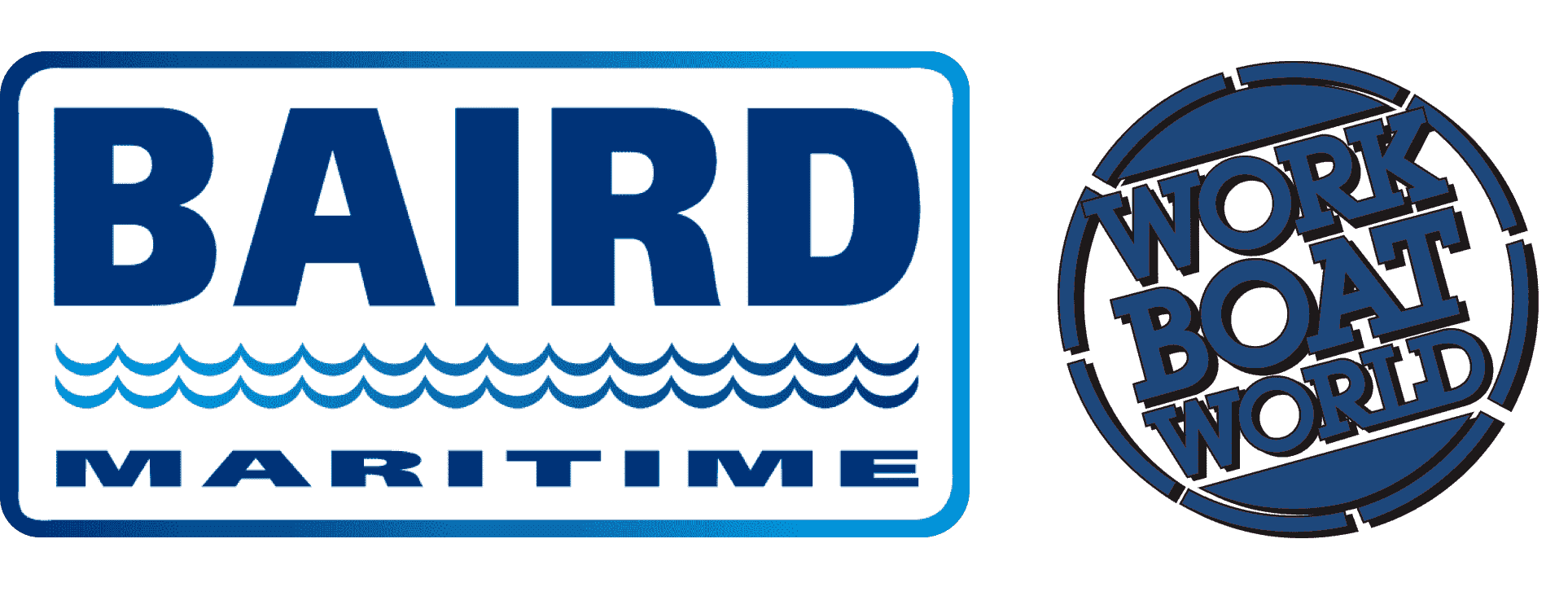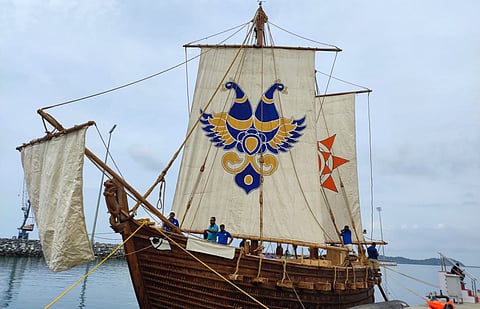VESSEL REVIEW | INSV Kaundinya – Indian wooden sailing ship built using traditional stitching technique
A new wooden sailing ship was recently introduced in India as part of a project by the country’s Ministry of Culture.
The 19.6-metre (64.3-foot) ship has been named INSV Kaundinya with the INSV prefix denoting it as an Indian naval sailing vessel. In addition to providing the ship with its crew, the Indian Navy was also responsible for the concept development, the design, and the technical validation that led to the vessel’s eventual construction.
The ship’s name had been chosen to honour Kaundinya I, a first century Indian merchant and mariner who later became King of Funan, an ancient territory that now forms part of Vietnam, Cambodia, and Thailand.
Construction of Kaundinya was undertaken by local company Hodi Innovations in fulfilment of a project led by historian and economist Sanjeev Sanyal. The vessel therefore boasts an appearance similar to that of an Indian wooden sailing ship from the fifth century AD.
All-natural materials and ancient building techniques
Perhaps the most notable attribute of the vessel is that it was built using traditional methods without the use of nails or any other modern connecting components or machinery. Instead, its planks have been stitched together with coconut coir rope – a method that has been used by Indian shipwrights for centuries – hence the vessel also becoming known as an “ancient stitched ship.”
“It’s all natural material,” Prathamesh Dandekar, Managing Director of Hodi Innovations, told Baird Maritime. “All of the waterproofing is done with coconut fibre and a mixture of tree sap called kundroos, and some cotton is used between the planks. The planks are bent into shape by basically cooking them in steam and then steam-bending them into shape.”
The ship has a square sail, wooden spars and wooden oars for steering, and the rig is also made entirely of wood. The hull geometry, the rigging, and the sails had to be “reimagined” and tested from first principles, according to the navy.
Dandekar explained that the main purpose of the stitched ship project was to build a vessel that would, “revive India’s maritime past.” He admitted that there is a lack of historical references on the country’s maritime past, though there are stories of Indians who had travelled to other countries millennia ago, as confirmed by the recorded histories of those other countries.
“We were a big naval nation before other nations even started venturing out to sea. That was the main motivation behind it – to build a boat to prove the fact that that was the case.”
Comprehensive design and construction work despite limited recorded references
The lack of available references posed a challenge to Hodi Innovations during the construction phase. In addition to employing naval architecture practices, the design team also needed to resort to archaeological interpretation. The result was a vessel that was both seaworthy and as historically authentic as possible.
“The inspiration was from a painting in the Ajanta Caves,” said Dandekar, indicating the drawing of a ship found by historians in some ancient caves in Maharashtra. “The knowledge is available in the country [among] artisans who still practice the craft [of stitching the wooden planks together], but there is nothing about it in writing. There’s only this one cave painting and some coins [that] have etched ships on them.”
Finding the right kinds of wood for each part of the vessel and figuring out how to bend the planks had also proved challenging.
“For instance, if the [required] frame is of a ‘Y’ shape, we had to find wood that has grown into a ‘Y’ pattern,” Dandekar told Baird Maritime.
The build team also needed to find trees that were bent to be cut out into planks to guarantee hull strength.
Combining traditional design with modern safety processes
The Indian Register of Shipping ensured that while the vessel retained its historical design, it also met contemporary safety and design standards. Model testing and structural analyses were therefore also carried out to determine whether the vessel’s hydrodynamic performance was satisfactory.
The ship’s design has also been modified to comply with IMO guidelines on rolling limits of similarly sized vessels. As a design measure to counter excessive rolling, the ship’s beam has been widened and its keel height adjusted, thereby lowering the centre of gravity.
These structural changes improve the righting moment — the force acting at a radial distance from the fore-and-aft line that brings the ship back to an upright position after rolling.
Additionally, the roll period — defined as the time it takes for the ship to complete one cycle of roll — has been optimised through these modifications. A longer roll period allows for smoother motion, reducing the risk of the vessel being thrown off-balance by abrupt wave movements, while also ensuring that the ship returns to an "even keel" after each roll.
Kaundinya is set to embark on commemorative voyages later this year, retracing ancient trade routes to destinations such as Oman and Indonesia.


